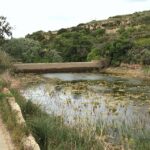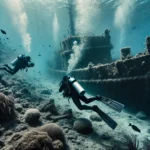Overview:
Embark on a journey through Malta’s rich history of water management. This self-guided tour uncovers how the Maltese ingeniously harnessed one of their most precious resources—from grand aqueducts to hidden springs. You’ll explore iconic sites like the Wignacourt Aqueduct, charming spots like Chadwick Lakes, and ancient systems like the qanats. Whether you’re a history enthusiast or simply curious, this tour offers a unique glimpse into Malta’s past.
Tour Itinerary:
- Wignacourt Aqueduct and Towers – Birkirkara, Santa Venera & MrieħelStart your day by exploring the impressive Wignacourt Aqueduct, a 17th-century marvel that brought fresh water to Valletta. Walking beneath its arches feels like stepping back in time. Think of the aqueduct as Malta’s lifeline, much like veins carrying essential nutrients through the body. The towering structures stand as monuments to human ingenuity and resilience.
- Tip: Visit early in the morning to avoid crowds and capture stunning photos in the soft light.
- Nearby: Grab a traditional Maltese breakfast at a local café. For food recommendations, check out The Best Food in Malta.
- Rabat – Roman Aqueduct System & QanatHead to Rabat to delve into Malta’s ancient water systems. While the underground qanats aren’t accessible, above-ground landmarks like the Saqqajja Fountain showcase how vital water was for daily life and community gatherings. Imagine these systems as the ancient internet of Malta, connecting communities in ways unseen but deeply felt.
- Tip: Combine this stop with a visit to St. Paul’s Church and explore the rich history of the area.
- Enhance Your Experience: Follow a self-guided Malta tour to discover more hidden gems.
- Dingli – Ghajn tal-Hasselin SpringNext, make your way to Dingli to find the secluded Ghajn tal-Hasselin Spring. Nestled with a stunning valley view, this spring was once a bustling hub where local women gathered to wash clothes and share stories—much like today’s social media platforms but face-to-face.
- Tip: Wear comfortable shoes; the path can be uneven.
- Family-Friendly: If traveling with kids, explore the best things to do in Malta with children for more activities in the area.
- Msida – Msida Washer SpringJourney to Msida to discover a hidden washer spring amid the urban landscape. It’s a small but poignant reminder of how every drop of water was cherished. Picture the scene centuries ago: neighbors chatting and children playing as laundry flutters in the breeze.
- Tip: Consider visiting during weekdays when the area is less crowded.
- Local Cuisine: After your visit, indulge in local dishes. Here’s a guide to the best food spots in Malta.
- Marsaxlokk – Spring and Fishermen’s StatueTravel to the picturesque fishing village of Marsaxlokk, famous for its vibrant “luzzus” boats. The small spring here tells a story of community and tradition. The nearby statue of a fisherman symbolizes the deep connection between freshwater and the village’s livelihood.
- Tip: Visit on a Sunday to experience the bustling fish market.
- Stay Nearby: For convenient accommodation, consider one of my Airbnbs in Sliema or Gzira—perfect bases for exploring. Learn more about Airbnb options in Malta.
- Mdina – Ghajn tal-Hasselin SpringJust outside Mdina’s ancient walls lies another Ghajn tal-Hasselin Spring. Although no longer in use, it echoes the whispers of a time when this “Silent City” was full of life and chatter around the water source.
- Tip: Spend some time wandering the narrow streets of Mdina, absorbing its timeless atmosphere.
- Cultural Insight: Dive into Malta’s artistic heritage by exploring Mattia Preti’s influence.
- Chadwick LakesConclude your tour at Chadwick Lakes, a series of reservoirs that come alive after the winter rains, transforming the area into a rare green oasis. It’s the perfect spot to relax and reflect on your journey through Malta’s water history.
- Tip: Best visited in the cooler months when the lakes are full.
- Winter Travel: Discover why Malta is a cheap warm destination in December.
Additional Information:
- Duration: Full-day tour (approximately 8-9 hours)
- Transportation: Utilize Malta’s efficient public transport. A Tallinja card offers unlimited bus travel.
- What to Bring: Comfortable walking shoes, water bottle, sun protection, and a camera.
- Local Tips:
- Entrance Fees: Most sites are free to visit.
- Best Time to Visit: Spring and autumn offer pleasant weather for exploration.
Stay in Comfort:
To make the most of your Maltese adventure, stay in one of my centrally located Airbnbs. Situated in Sliema and Gzira, these accommodations provide easy access to all the tour spots. Each property is fully equipped, offering a home-away-from-home experience.
- Why Airbnb? Enjoy the flexibility and comfort that hotels can’t offer. For more details, check out Airbnb in Sliema and AriBnB in Gzira.
Final Thoughts:
This tour isn’t just about visiting sites; it’s about connecting with Malta’s soul. You’ll walk away with not just photos but stories and insights that few tourists get to experience.



